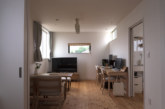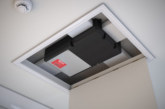 Jo Miller, a member of the Association of Noise Consultants (ANC), discusses why it is vital to consider acoustics in new homes.
Jo Miller, a member of the Association of Noise Consultants (ANC), discusses why it is vital to consider acoustics in new homes.
Environmental noise can have negative impacts on the health and wellbeing and is a well-recognised public health risk.
The World Health Organisation, in their latest Environmental Noise Guidance, states that exposure to noise presents the second largest health risk to the population of Western Europe, second only to poor air quality.
Impacts on health and wellbeing include cardiovascular disease, annoyance and distractions in activities such as reading and conversation.
Within the UK, the main environmental noise sources of concern are road transport, and aircraft, along with industrial and commercial sources and sport and entertainment.
For housebuilders and developers, there are a number of acoustic requirements which need to be met, which fall into three categories, namely planning requirements, Building Regulations Approved Document E and Contractual requirements for the end client.
Environmental noise is a material consideration in the planning process and is often required to be assessed at the planning stage of developments. Noise impact assessments are undertaken by Noise Consultants such as those within the Association of Noise Consultants (ANC).
Practical guidance
A useful guide for housebuilders and developers in addressing the issue is ‘ProPG Planning and Noise, May 2017,’ often referred to as ProPG.
Developed by the ANC, with the Institute of Acoustics and the Chartered Institute of Environmental Health, ProPG provides practitioners with guidance on a recommended approach to the management of noise within the planning system in England.
It encourages better acoustic design for new residential development and aims to protect people from the harmful effects of noise.
The use of good acoustic design considers issues such as careful site layouts, better orientation of rooms within dwellings and the use of acoustic mitigation measures.
The ProPG approach has the following advantages:
• It allows rapid identification for sites that are very unlikely to be suitable for new residential developments due to noise, saving developers time and money
• Provides quantitative guidance for proposed new residential developments affected by existing sources
• Can potentially speed up the planning decision process by ensuring noise issues are addressed early in the process, and
• It helps reduce the harmful impact of noise for new residential developments.
The use of noise mitigation can be utilised to achieve both internal and external noise limits and measures that are regularly incorporated into new-build designs include:
• Orientation of buildings such that noise sensitive areas are protected from noise
• Use of noise bunds and barriers to reduce the impact of noise
• The use of suitable acoustic glazing and ventilation to reduce the noise ingress into sensitive rooms
ProPG and other issues relating to acoustics are covered in a free guide for housebuilding professionals, produced by the ANC, which offers an overview of the most common acoustic requirements and considerations that affect new residential developments.
Available here, the guide sets out the value of good acoustics to housebuilders and developers, including helping people feel happier with their homes, making the property more desirable – and potentially more valuable.
Reference is made to ProPG guidance, as well as details about planning requirements and Building Regulations Approved Document E, and acoustics in BREEAM and sustainability.
Noise ingress is often controlled by suitable acoustic ventilation as well as acoustic glazing. This can lead to a conflict in relation to ventilation standards for new homes and as a result the ANC has produced draft guidance, ‘Acoustics Ventilation and Overheating, Residential Design Guide, 2018.
This guidance considers the provision for both ventilation and mitigation of overheating and control of noise in one guidance document The finalised document is due for completion shortly.
The impact of noise, ventilation and overheating in light of the changing climate patterns and the drive towards more energy efficient homes is also discussed.









